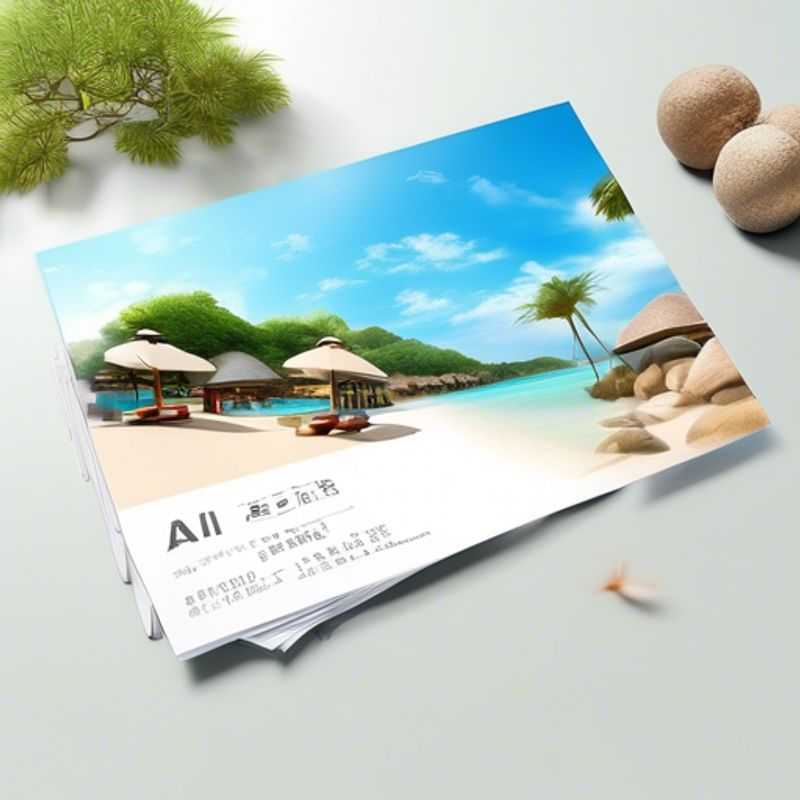AI Text for E-commerce Product Pages: How to Boost Your Website with AI Content Creation

Boost Your E-Commerce with AI Text: 7 Essential Tips for Product Page Optimization
In the dynamic world of e-commerce, capturing attention and driving conversions is paramount.

Write Like a Pro: Crafting Concise, Informative, and Engaging Text
Ensuring your text is concise, informative, and engaging is crucial for capturing your audience's attention. Here are some key tips to make your content stand out:
Conciseness: Keep your writing clear and to the point. Avoid unnecessary jargon or overly complex sentences.
Informative: Provide valuable information that your readers will find useful. Back up your claims with evidence and cite credible sources.
Engagement: Make your content interesting and relatable. Use storytelling techniques, vivid language, and compelling visuals.
To make your content truly stand out, consider the following:
Target your audience: Understand who you are writing for and tailor your language and content accordingly.
Use strong headlines: Grab attention with clear and concise headlines that accurately reflect your content.
Optimize for readability: Ensure your text is easy to read by using headings, subheadings, bullet points, and white space.
Remember, effective writing requires careful planning, writing, and editing. By following these tips, you can create content that is both informative and engaging.

Keyword Magic: How to Boost Your Website's Searchability
Incorporating relevant keywords is crucial for enhancing the searchability of your content online. By strategically placing keywords throughout your text, you can improve your visibility on search engines, making it easier for users to find your material. Focus on using long-tail keywords, which are more specific phrases that target niche audiences and typically have less competition.
When estimating a plan to incorporate keywords, consider the following paid activities: keyword research tools (like SEMrush or Ahrefs), which can help identify high-traffic keywords; pay-per-click (PPC) advertising to boost visibility for selected keywords; and content promotion services that can help distribute your keyword-optimized content more widely.
Additionally, ensure that your keywords are naturally integrated into your content, including titles, headings, and meta descriptions, as this can enhance user experience and reduce bounce rates. Regularly monitor performance to adjust your strategy based on analytics, ensuring that your efforts yield the best possible results.

Show, Don't Tell: Highlighting Unique Product Features and Benefits
When it comes to highlighting unique product features and benefits, it's crucial to focus on the performance and optimization of your workflow products. you can write content that appeals to your audience - informative people who are in a hurry and want to read a summarized version.
Start by emphasizing the most important information and facts about your product's unique features and benefits. Use HTML tags to highlight the key points that you want your readers to remember. Avoid including any unnecessary information and stick to the accurate facts that you know about your product.
When it comes to paid activities that might be included in your plan, be sure to provide details about them. This will help your readers understand the full scope of what's involved in highlighting your product's unique features and benefits.
Remember, your goal is to create a warm, accessible, and friendly approach that resonates with your audience. By focusing on the performance and optimization of your workflow products, you can showcase their special qualities and help your readers make informed decisions about their purchases.

Structure Your Content: Clear Headings & Bullet Points for Better Readability
Crafting Engaging Content with Clear Headings and Bullet Points:
Effective content structure is crucial for capturing the attention of your audience and delivering your message effectively. Here's a guide to help you create informative and well-organized content:
Utilize Clear Headings:
- Organize your content into logical sections using clear and descriptive headings.
- Ensure that your headings accurately reflect the content that follows and help readers navigate your piece.
- Use a hierarchical structure, such as H1, H2, and H3 tags, to create a clear and intuitive flow for your content.
Leverage Bullet Points:
- Break down complex information into easy-to-digest bullet points.
- Use bullet points to highlight key points, tips, or steps in your content.
- Ensure that your bullet points are concise, informative, and visually appealing.
Optimize for Readability:
- Use a clean and legible font, with appropriate font size and line spacing.
- Maintain a consistent tone and writing style throughout your content.
- Break up your content into short, manageable paragraphs to improve readability.
By incorporating these best practices, you can create content that is not only informative but also engaging and easy to navigate. Remember, the key is to provide your readers with a seamless and enjoyable experience.

Boost Mobile Readability: Optimizing for Scannability and Engagement
Mobile users are in a hurry! They scan content quickly, often just looking for the information they need. To optimize your website for mobile readability and scanability, follow these tips:
Keep it Short and Sweet: Use short paragraphs and sentences. Break up long blocks of text with headings, subheadings, and bullet points.
Prioritize Visual Hierarchy: Use headings (H1, H2, etc.) to organize content and make it easy to skim. Highlight key information with bold text () or italics (). Use bullet points and numbered lists to present information concisely.
Optimize Images: Use high-quality, mobile-friendly images that load quickly. Optimize image file sizes without compromising quality. Use alt text to describe images for accessibility and search engine optimization.
Make it Easy to Read: Use a clear and legible font size. Avoid using too many different fonts. Choose a font that is easy to read on a small screen.
Test on Real Devices: Check your website's appearance and functionality on different mobile devices. Use tools like Google's Mobile-Friendly Test to identify any issues.
By following these tips, you can make your website more accessible and engaging for mobile users. This will improve user experience, increase engagement, and boost your search engine rankings.

Listen and Learn: Refining Content Based on User Feedback
Testing and refining your content based on user feedback is crucial for its success. It helps you understand what resonates with your audience and optimize your content for better engagement and conversions.
Here’s how to do it:
1. **Gather Feedback:** Implement user surveys, polls, and A/B testing to gather data on your content's effectiveness. You can also leverage social media comments, email replies, and customer support interactions to understand user opinions.
2. **Analyze Feedback:** Identify patterns and recurring themes in the feedback. Focus on both positive and negative comments to understand what’s working well and what needs improvement.
3. **Refine Content:** Based on the analysis, make necessary changes to your content. Improve readability, clarity, and engagement by addressing user concerns, incorporating suggestions, and optimizing for better search engine visibility.
4. **Iterate and Repeat:** Continuously test and refine your content based on user feedback. Don’t be afraid to experiment and adapt your strategy based on the insights you gather. Remember, user feedback is valuable for ongoing improvement.

Maintain Consistency: A Guide to Streamlining Product Pages
Maintaining consistency across all product pages is crucial for a seamless and user-friendly online shopping experience. Consistent product pages enhance brand recognition and build trust with your customers. A unified look and feel across all products helps streamline navigation and increases the efficiency of your website.
Here are some key areas to focus on when striving for product page consistency:
Product Information: Ensure all product pages include essential details like product name, description, features, benefits, and specifications in a standardized format. This consistency aids customer understanding and comparison.
Product Images: Utilize high-quality, consistent product images across all pages. This enhances the visual appeal and creates a unified brand identity. Ensure image sizes and formats are standardized for optimal loading times.
Page Layout: Implement a consistent layout for all product pages, including the placement of key elements like product images, descriptions, specifications, and call-to-action buttons. This makes navigation intuitive for customers.
Product Categories: Structure your product categories logically and consistently across all product pages. This helps customers easily find what they are looking for and improves site navigability.
Pricing and Availability: Display pricing and availability information clearly and consistently on every product page. This avoids confusion and allows customers to make informed purchase decisions.
Reviews and Ratings: Include a standardized review and rating system across all product pages. This allows customers to easily compare products and assess their popularity.
Call-to-Action: Utilize consistent calls-to-action across all product pages, such as "Add to Cart" or "Buy Now," to encourage customer engagement and drive sales.
Maintaining consistency across your product pages is an ongoing process. Regularly review and update your product pages to ensure they adhere to your established standards. This commitment to consistency will create a positive user experience and contribute to your website's success.

